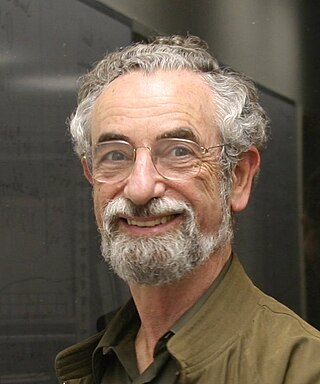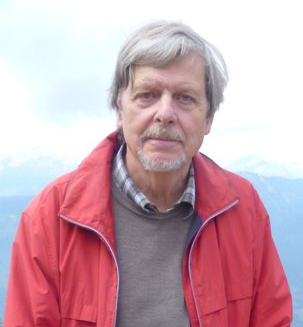
Erwin Rudolf Josef Alexander Schrödinger, sometimes written as Schroedinger or Schrodinger, was a Nobel Prize-winning Austrian and naturalized Irish physicist who developed a number of fundamental results in quantum theory: the Schrödinger equation provides a way to calculate the wave function of a system and how it changes dynamically in time.

Arnold Johannes Wilhelm Sommerfeld, was a German theoretical physicist who pioneered developments in atomic and quantum physics, and also educated and mentored many students for the new era of theoretical physics. He served as doctoral supervisor to many Nobel Prize winners in physics and chemistry.

Elliott Hershel Lieb is an American mathematical physicist and professor of mathematics and physics at Princeton University who specializes in statistical mechanics, condensed matter theory, and functional analysis.

Barry Martin Simon is an American mathematical physicist and was the IBM professor of Mathematics and Theoretical Physics at Caltech, known for his prolific contributions in spectral theory, functional analysis, and nonrelativistic quantum mechanics, including the connections to atomic and molecular physics. He has authored more than 400 publications on mathematics and physics.

Detlev Buchholz is a German theoretical physicist. He investigates quantum field theory, especially in the axiomatic framework of algebraic quantum field theory.
Walter Thirring was an Austrian physicist after whom the Thirring model in quantum field theory is named. He was the son of the physicist Hans Thirring.

Michael Aizenman is an American-Israeli mathematician and a physicist at Princeton University, working in the fields of mathematical physics, statistical mechanics, functional analysis and probability theory.

Physics is a scientific discipline that seeks to construct and experimentally test theories of the physical universe. These theories vary in their scope and can be organized into several distinct branches, which are outlined in this article.
The Lieb–Liniger model describes a gas of particles moving in one dimension and satisfying Bose–Einstein statistics.

Huzihiro Araki was a Japanese mathematical physicist and mathematician who worked on the foundations of quantum field theory, on quantum statistical mechanics, and on the theory of operator algebras.
Adiabatic accessibility denotes a certain relation between two equilibrium states of a thermodynamic system. The concept was coined by Constantin Carathéodory in 1909 and taken up 90 years later by Elliott Lieb and J. Yngvason in their axiomatic approach to the foundations of thermodynamics. It was also used by R. Giles in his 1964 monograph.
The Erwin Schrödinger International Institute for Mathematics and Physics (ESI) is a visitors oriented research institute in Vienna, Austria. It is located close to the city center in the remodeled historical premises of a seminary in Boltzmanngasse 9 in Vienna's ninth district.

Robert Seiringer is an Austrian mathematical physicist.
The Levi L. Conant Prize is a mathematics prize of the American Mathematical Society, which has been awarded since 2000 for outstanding expository papers published in the Bulletin of the American Mathematical Society or the Notices of the American Mathematical Society in the past five years. The award is worth $1,000 and is awarded annually.
Walter Kutschera is an Austrian physicist.
Mathieu Lewin is a French mathematician and mathematical physicist who deals with partial differential equations, mathematical quantum field theory and mathematics of quantum mechanical many-body systems.
Guðrún Kvaran is a professor emeritus at the Faculty of Icelandic and Comparative Cultural Studies, University of Iceland, and the Árni Magnússon Institute for Icelandic Studies.
Jan Philip Solovej is a Danish mathematician and mathematical physicist working on the mathematical theory of quantum mechanics. He is a professor at University of Copenhagen.
Stability of matter refers to the problem of showing rigorously that a large number of charged quantum particles can coexist and form macroscopic objects, like ordinary matter. The first proof was provided by Freeman Dyson and Andrew Lenard in 1967–1968, but a shorter and more conceptual proof was found later by Elliott Lieb and Walter Thirring in 1975.

Helmut Ritsch is an Austrian quantum physicist and a professor of theoretical physics at the University of Innsbruck.










